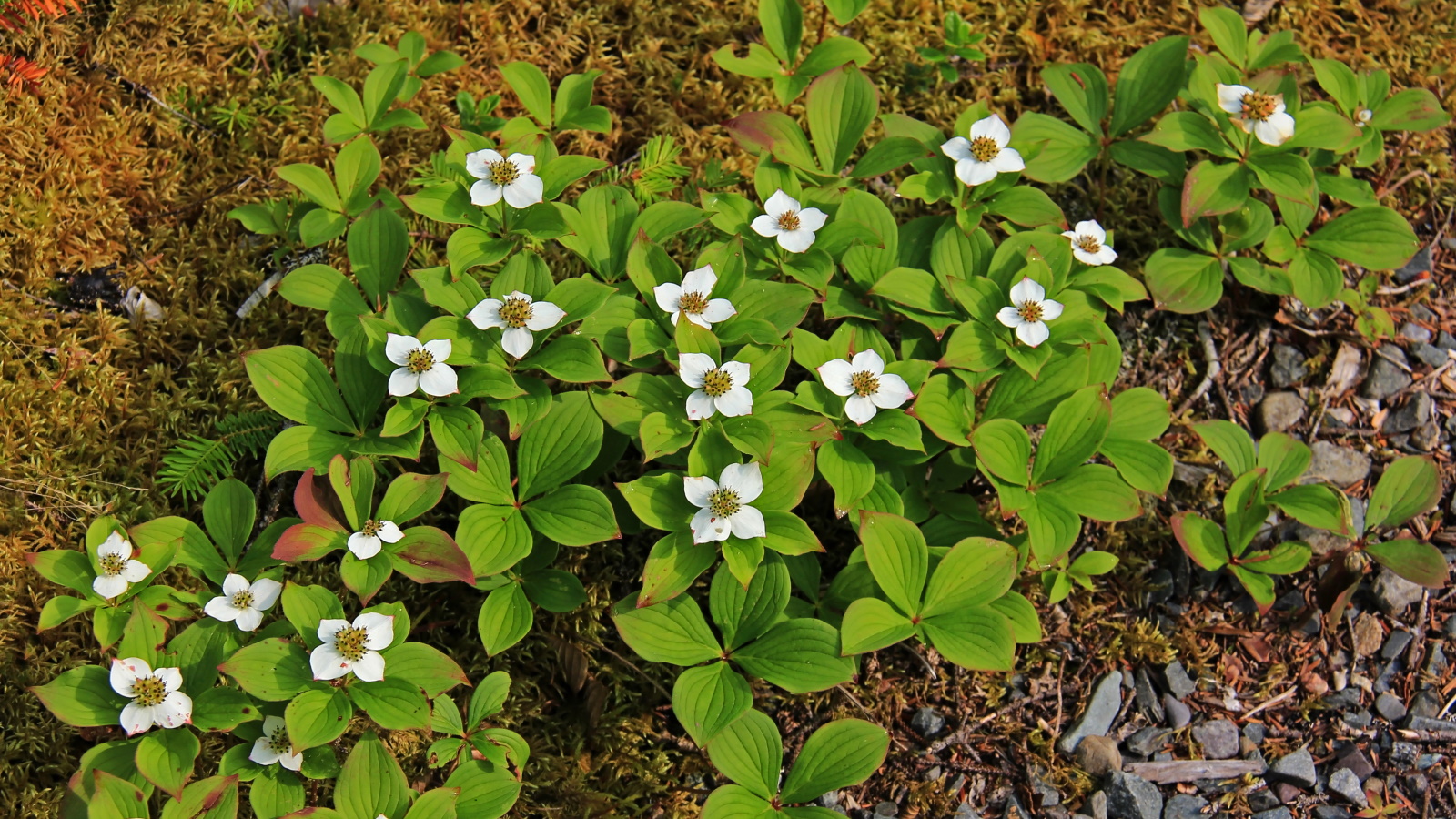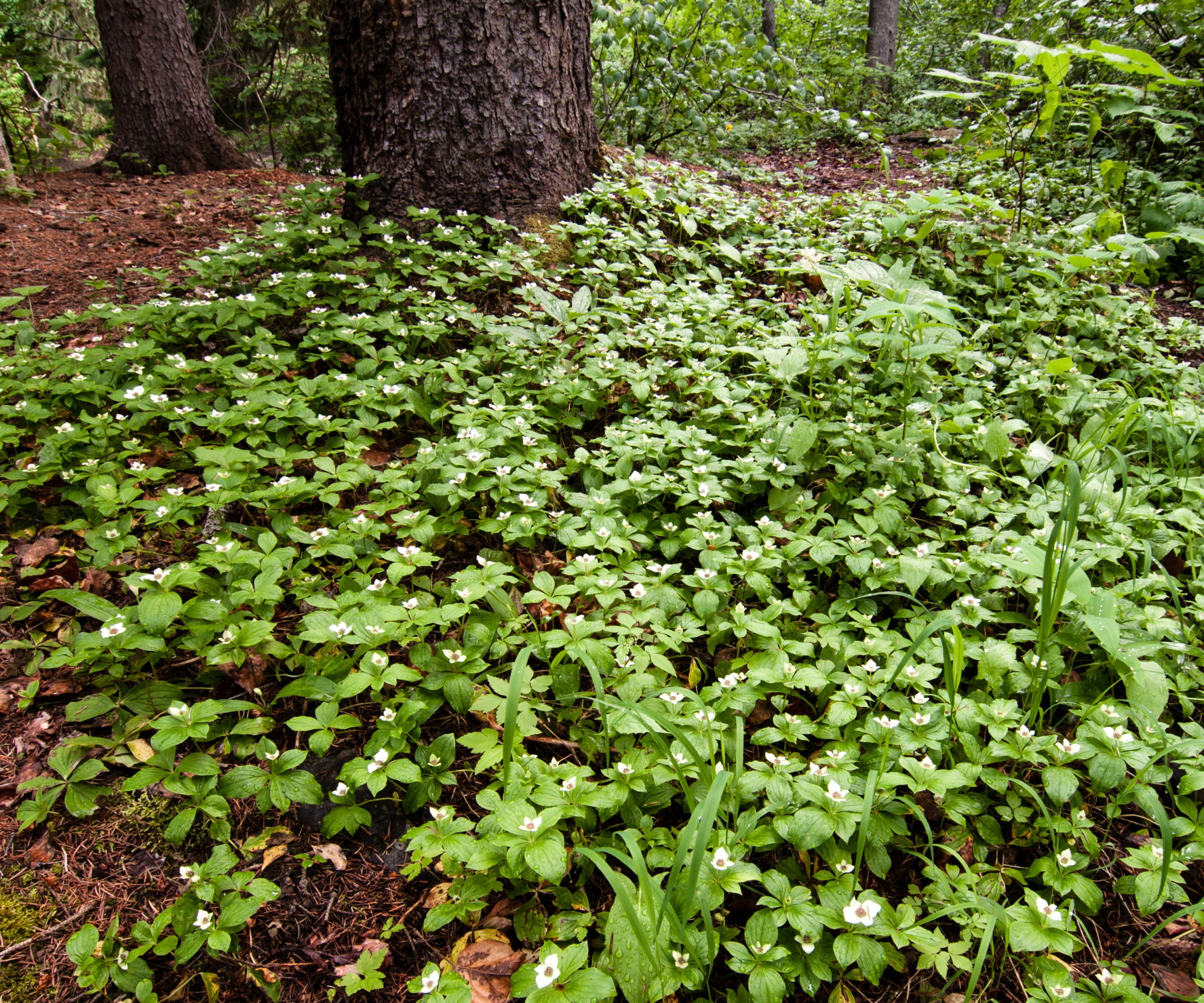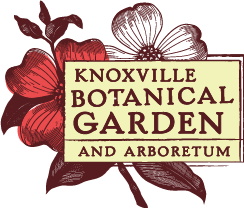How to grow bunchberry dogwood – the ideal groundcover plant for shady spots
The diminutive but attractive bunchberry dogwood is an ideal option for those looking to add greenery under trees or large shrubs


Bunchberry dogwood otherwise known as the creeping dogwood, Cornus canadensis, is a small but resilient ground cover often considered one of the best shade plants. This native dogwood is found growing in the cool temperate regions of North America, where it thrives in damp and shady forest areas and woodlands, thriving under large trees and shrubs.
This creeping perennial is one of the best ground cover plants and is a useful option for those looking to add greenery to dappled and shaded situations. Deciduous leaves unfurl in spring, appearing bright green before producing attractive white flowers in spring and summer. Come fall, the bunchberry plant produces vibrant red berries, popular with wildlife. Truly, this plant provides interest across the seasons.
Unique amongst dogwoods, Cornus canadensis is not a shrub or a tree, but a low-growing ground cover, and yet, despite its diminutive nature, the bunchberry dogwood is notable as a resilient and hardy plant, growing happily in difficult situations that are cold and damp. It is also noted as a useful plant for birds, providing food for animals and insects throughout the year. Discover how to grow this attractive and useful ground cover plant.

How to grow bunchberry dogwood
Bunchberry dogwoods are ideal plants for those looking for ground cover options for a shaded or dappled situation, such as under large shrubs or trees. Read on to discover how best to grow this resilient and shade-tolerant perennial.
Things to consider before growing bunchberry dogwood

Endemic to North America, 'the bunchberry dogwood is a great choice for a yard or garden for those living in US hardiness zone 6 or cooler,' says Jacob Resor, Director of Horticulture at the Knoxville Botanical Garden and Arboretum, in East Tennessee.
Whilst far less showy than the well-known flowering dogwood, the bunchberry dogwood shares 'many of the same gifts,' says Jacob. In addition to the white flowers that emerge in spring and summer, they have 'beautiful fall color with excellent bird, butterfly, moth and wildlife support.' Indeed, during fall many birds and mammals can be seen feeding on the colorful berries.
This ground cover dogwood 'forms a relatively dense carpet,' says Dr Ross Bayton, Director at Heronswood Garden in Kingston, Washington. It is a deciduous plant that 'behaves like an herbaceous perennial, dying to ground level every winter,' Ross says, only to reshoot with fresh green foliage in the spring.
The bunchberry dogwood is 'happiest in a cool, damp, shady environment,' Ross continues, preferably with acidic soils. This plant will 'be less robust when soil moisture is lacking or if planted in a hot, sunny spot,' and so growing in warmer zones is not recommended. For optimal growth, therefore, aim for dappled shade with minimal direct light, planted in moisture-retentive soil.
Whilst it is not impossible to grow bunchberry dogwoods in containers, it is preferable to mimic the conditions of a woodland habitat, growing in the ground where moisture can be retained. Soil that free-draining, as is often the case with containers, will not suit this ground cover plant. Consider growing flowering dogwood trees in pots rather than bunchberry dogwood.

Travis Wilson is the Director of Horticulture at the Knoxville Botanic Garden and Arboretum in East Tennessee. Travis helps to care for the collection of native dogwoods containing many different species and dozens of varieties.

London-born botanist and gardener Dr Ross Bayton gained his PhD at the Royal Botanic Gardens, Kew, studying the classification of tropical palms. He’s the author of several books on horticulture. He is now the director of the world-renowned Heronswood Garden in Kingston, Washington, and is developing a 5-acre garden at home in nearby Bremerton.
How to grow and care for bunchberry dogwood

- Soil: Bunchberry dogwood plants prefer slightly acidic soils, like that found in woodland areas. They prefer moisture-retentive soil with a small amount of drainage, so the soil is not overly waterlogged or boggy. It can be a good idea to add a layer of organic mulch to the planting area around your bunchberry dogwoods, adding nutrients and improving the quality of the soil every year. This is best done in the winter months when deciduous plants have died back.
- Light: This dogwood can tolerate full to partial shade, growing well in dappled light when grown under large trees. Whilst bunchberry dogwoods will tolerate a small amount of morning sun, avoid planting in a position with afternoon sun, which will damage the foliage of your plants.
- Watering: Water regularly after planting during the first year, being sure to check on the soil frequently, especially during dry spells. Even in shaded positions, hot weather will dry out the soil quickly. Once established, bunchberry dogwoods are self-sufficient and will not need much attention throughout the year.
- Fertilizing: Bunchberry dogwoods can benefit from the use of a general fertilizer distributed around the base of the plant, like this all-purpose plant feed from Walmart. Once established, by year 2 or 3, your plants will not require fertilizing.
- Pruning: As a deciduous perennial ground cover, bunchberry dogwoods will die back every fall and winter. It is best to leave the foliage through fall, as it will turn attractive hues of golden yellow and orange, creating a colorful display alongside the red berries that are produced. From January, foliage and stems can be cut down to the base. After pruning, it is recommended that you apply a layer of organic mulch before new shoots appear in the early spring.
FAQs
Is bunchberry dogwood evergreen?
No, the bunchberry dogwood is a deciduous perennial. In the fall, the leaves will change color and drop, before reshooting with fresh green foliage in spring.
Is the bunchberry dogwood hardy?
Yes, the bunchberry dogwood will grow well in US hardiness zone 3 - zone 6. It will tolerate cold and snow in the winter months, but this plant may struggle in the summer months if grown in a sunny position with soil that is too free-draining.
The bunchberry dogwood is an ideal option for those looking to plant under large shrubs and trees, or if planted in a woodland. Consider growing other native dogwood trees in your backyard this year, which all possess beautiful star-like flowers in a range of colors.
Sign up to the Homes & Gardens newsletter
Design expertise in your inbox – from inspiring decorating ideas and beautiful celebrity homes to practical gardening advice and shopping round-ups.

Thomas is a Content Editor within the Gardens Team at Homes and Gardens. He has worked as a professional gardener for both public spaces and private estates, specializing in productive gardening, growing food and flowers. Trained in Horticulture at the Garden Museum, he has written on gardening and garden history for various publications, including The English Garden, Gardens Illustrated, Hortus, The London Gardener and Bloom. He has co-authored a Lonely Planet travel book, The Tree Atlas, due out in 2024.
-
 Extend the lifespan of your appliance with 5 simple but crucial washing machine maintenance tips
Extend the lifespan of your appliance with 5 simple but crucial washing machine maintenance tipsFrom cleaning the filters to keeping the door open, experts reveal the washer tips they swear by
By Andy van Terheyden Published
-
 These are the 6 must-have colors to decorate with in April 2025
These are the 6 must-have colors to decorate with in April 2025What do retro-inspired yellows and beautiful blues all have in common? They're on our hot list for the season ahead
By Sophia Pouget de St Victor Published